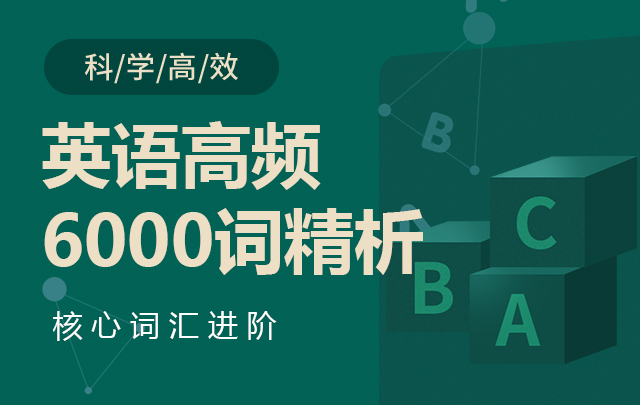Spanish Tapestry Factory Creating Pieces after 300 Years
西班牙挂毯工厂在300年后再次创作作品
【听力音频】
-----------------------------------------------------------------
By Gregory Stachel
09 January 2024
Spain's Royal Tapestry Factory has been providing clothes, called carpets for the floor and tapestries for the wall, for palaces and public buildings for more than 300 years.
Found on a quiet street in Spain's capital Madrid, its artisans combine long-held knowledge of the work with new methods to create cloth-based products.
The factory was opened in 1721 by Spain's King Felipe V. He brought in Catholic artisans from Flanders, an area found in today's Belgium, to get it started. At the time, the area had been under Spanish control.
Cloth like wool can be found in all colors in the factory. And tools like bobbins and spinning wheels are everywhere in the factory. Some of the original wooden machines are still in use.
Alejandro Klecker de Elizalde is the factory's general director. "Here the only products we work with are silk, wool, jute, cotton, linen," he said. "And these small leftovers that we create, the water from the dyes, or the small pieces of wool, everything is recycled, everything has a double, a second use."
The factory also brings old pieces that have been damaged through time back to good condition. And it keeps some of the most important cloth and material records in Europe.
Now, 70 percent of its buyers are individuals from Latin America, Europe, and the Middle East.
The factory recently received one of its biggest orders, 32 tapestries for the Palace of Dresden in Germany. The order is worth more than 1 million dollars and it will provide work for up to five years, Klecker de Elizalde said.
In 2018, the factory finished a tapestry for a Lebanese buyer based on the work Sabra and Shatila Massacre by Iraqi artist Dia al-Azzawi. The cloth shows the 1982-83 violence by Christian Phalangist militia in Palestinian refugee camps that were guarded by Israeli troops.
Creating a tapestry is a difficult process that takes several weeks or months of work for each square meter.
A tapestry begins with "cartoons," or drawings on paper that are later copied onto a system of material called warps which are then woven over.
One of the factory's well-known cartoonists was master painter Francisco Goya, who began working there in 1780. Some of the tapestries he designed are now found in the nearby Prado Museum and Madrid's Royal Collections Gallery.
I'm Jill Robbins.
Irene Yagüe reported this story for The Associated Press. Gregory Stachel adapted it for VOA Learning English.
-----------------------------------------------------------------
作者:Gregory Stachel
2024年1月9日
西班牙皇家挂毯工厂已经为宫殿和公共建筑提供地毯和挂毯等布艺产品超过300年。
这家工厂位于西班牙首都马德里的一条安静的街道上,其工匠们结合了长期的工作知识和新的方法来创造基于布料的产品。
这家工厂是在1721年由西班牙国王菲利普五世开设的。他从弗兰德斯(今天的比利时地区)引进了天主教工匠来开启这个项目。当时,这个地区一直在西班牙的控制之下。
工厂里到处都是各种颜色的羊毛等布料,以及各种工具,如纱锭和纺车。一些原始的木制机器仍在使用。
Alejandro Klecker de Elizalde是工厂的总经理。他说:“我们这里只使用丝绸、羊毛、黄麻、棉花、亚麻等产品。而我们产生的这些小剩余物,比如染料的水,或者小块的羊毛,一切都会被回收,一切都有第二次使用的可能。”
这家工厂还会修复那些因时间损坏的旧作品,使其恢复良好状态。并且,它保存了欧洲一些最重要的布料和材料记录。
现在,70%的买家是来自拉丁美洲、欧洲和中东的个人。
工厂最近收到了一份最大的订单,为德国德累斯顿宫制作32幅挂毯。Klecker de Elizalde表示,这个订单价值超过100万美元,将为工厂提供长达五年的工作。
2018年,工厂为一位黎巴嫩买家完成了一幅基于伊拉克艺术家Dia al-Azzawi的作品《萨布拉和沙提拉大屠杀》的挂毯。这幅布艺品描绘了1982-83年由基督教法兰吉斯党民兵在以色列军队守卫的巴勒斯坦难民营中发生的暴力事件。
制作一幅挂毯是一个复杂的过程,每平方米的工作需要花费几周或几个月的时间。
制作挂毯开始于“卡通”,也就是纸上的画,这些画随后被复制到一种叫做经纱的材料系统上,然后被编织在上面。
工厂的一位知名卡通画家是大师级画家弗朗西斯科·戈雅,他于1780年开始在那里工作。他设计的一些挂毯现在可以在附近的普拉多博物馆和马德里皇家收藏画廊中找到。
我是吉尔·罗宾斯。
Irene Yagüe为美联社报道了这个故事。Gregory Stachel为VOA学习英语改编了它。
-----------------------------------------------------------------
这个故事中的词汇
palace – n. 宫殿,国王、女王或总统的官邸
dye – n. 用于改变某物(如头发或布料)颜色的物质,通常是永久性的
recycle – v. 从(已经使用过的东西)制作新的东西
warp – n. 织布机上或编织物中上下运行的线
weave – v. 通过交叉线或其他长条形材料的上下编织来制作某物(如布料)
本文关键字:
 免费试听
免费试听

时长 : 5:22 主讲 : 金格妃

时长 : 27:51 主讲 : 金格妃

时长 : 17:20 主讲 : 郭宁

时长 : 3:54 主讲 : 金格妃

时长 : 26:58 主讲 : 乔迪

时长 : 26:58 主讲 : 乔迪

时长 : 26:58 主讲 : 乔迪

时长 : 3:54 主讲 : 金格妃

时长 : 1:46 主讲 : 金格妃
 推荐阅读
推荐阅读
Webb Telescope Captures Images of 19 Spiral Galaxies 韦伯望远镜捕捉到19个螺旋星系的图像
来源 : 网络 2024-02-19 13:01:00 关键字 :
Student Academy Awards Provide ‘Momentum’ for Young Filmmakers 学生学院奖为年轻电影制作人提供“动力”
来源 : 网络 2024-02-19 11:48:00 关键字 :
Do You Have a Doppelg?nger ? 你有一个“分身”吗?
来源 : 网络 2024-02-18 11:37:00 关键字 :
Is Elon Musk Worth $55 8 Billion to Tesla?埃隆·马斯克对特斯拉来说价值558亿美元吗?
来源 : 网络 2024-02-18 11:32:00 关键字 :
Remembering Chita Rivera 记忆中的奇塔·里维拉
来源 : 网络 2024-02-16 11:26:00 关键字 :
Women to Take Center Stage at the Grammys 女性将在格莱美奖上占据主导地位
来源 : 网络 2024-02-16 11:20:00 关键字 :
Reduction and Assimilation 音节减少和同化
来源 : 网络 2024-02-15 11:13:00 关键字 :
Why Is Canada Limiting Foreign Students? 为什么加拿大要限制外国学生?
来源 : 网络 2024-02-15 11:07:00 关键字 :
It Has Never Been More Costly to See the Super Bowl 观看超级碗的费用从未如此高昂
来源 : 网络 2024-02-14 11:02:00 关键字 :
Australian Filmmaker Shows Japanese Single Mothers, Children Face Poverty 澳大利亚电影制片人展示日本单亲妈妈和孩子面临贫困的情况
来源 : 网络 2024-02-14 10:55:00 关键字 :


 精品课
精品课
价格 : 0元
限报人数:1000人
价格 : 0元
限报人数:1000人
价格 : 0元
限报人数:1000人
价格 : 0元
限报人数:1000人
 阅读排行榜
阅读排行榜
 相关内容
相关内容